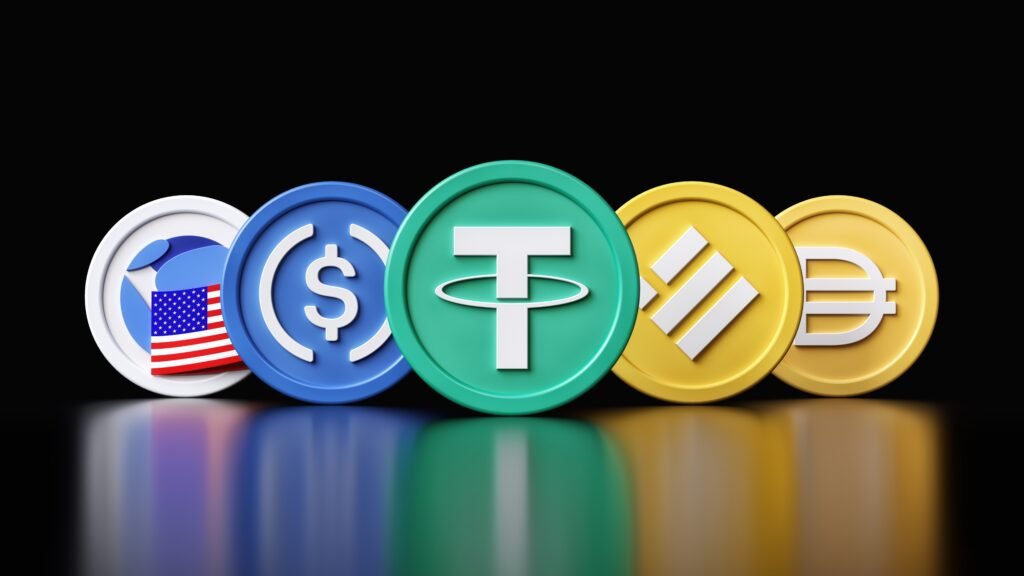
Introduction Cryptocurrency markets are known for their volatility, with prices fluctuating dramatically in short periods. To address this issue, stablecoins have emerged as a crucial component of the digital financial ecosystem. These cryptocurrencies are designed to maintain a stable value by pegging them to traditional assets such as fiat currencies, commodities, or even other cryptocurrencies.
What Are Stablecoins? Stablecoins are digital assets that combine the benefits of cryptocurrencies—such as security, decentralization, and fast transactions—with the price stability of traditional financial assets. They act as a bridge between the volatile crypto world and traditional finance, making them essential for trading, lending, and payments within the DeFi ecosystem.
Types of Stablecoins Stablecoins are classified based on the mechanism they use to maintain their stability:
- Fiat-Collateralized Stablecoins
- These stablecoins are backed by reserves of traditional fiat currencies like USD, EUR, or GBP.
- Examples: Tether (USDT), USD Coin (USDC), Binance USD (BUSD).
- Pros: High stability, widely accepted, and easy to understand.
- Cons: Centralized control, requiring trust in the issuer’s ability to maintain reserves.
- Crypto-Collateralized Stablecoins
- These are backed by other cryptocurrencies as collateral and use smart contracts to maintain their peg.
- Examples: Dai (DAI), sUSD.
- Pros: More decentralized than fiat-backed stablecoins.
- Cons: Requires over-collateralization due to crypto volatility, making capital efficiency lower.
- Algorithmic Stablecoins
- These stablecoins rely on algorithmic mechanisms to adjust supply and demand, maintaining their price peg without collateral.
- Examples: Frax (FRAX), Ampleforth (AMPL).
- Pros: No need for reserves, potentially more scalable.
- Cons: High risk of failure if the algorithm fails to maintain stability (e.g., TerraUSD collapse).
- Commodity-Backed Stablecoins
- These stablecoins are pegged to the value of physical assets like gold or other commodities.
- Examples: Paxos Gold (PAXG), Tether Gold (XAUT).
- Pros: Provides exposure to traditional assets while remaining in the crypto ecosystem.
- Cons: Liquidity can be lower compared to fiat-backed stablecoins.
Use Cases of Stablecoins Stablecoins play a vital role in the cryptocurrency market, with various applications:
- Trading & Investing: Traders use stablecoins to hedge against volatility and quickly move funds between different cryptocurrencies.
- Payments & Remittances: Faster, cheaper cross-border transactions compared to traditional banking systems.
- Lending & Borrowing: Used in DeFi platforms such as Aave and Compound to provide liquidity for loans.
- Store of Value: In countries with unstable local currencies, stablecoins provide an alternative means of storing wealth.
Advantages of Stablecoins
- Reduced Volatility: Provides a stable alternative to volatile cryptocurrencies.
- Faster Transactions: Enables instant global transfers without intermediaries.
- Lower Transaction Costs: Cheaper than traditional banking fees for cross-border payments.
- Access to DeFi: Facilitates lending, borrowing, and earning yields in the DeFi space.
Risks and Challenges of Stablecoins
- Regulatory Uncertainty: Governments and financial institutions are increasing scrutiny on stablecoin issuers.
- Centralization Risks: Fiat-backed stablecoins rely on centralized entities, raising concerns about transparency.
- Smart Contract Risks: Algorithmic stablecoins are vulnerable to exploits or de-pegging incidents.
- Reserve Backing Concerns: Some stablecoins have faced allegations of inadequate reserves.
Conclusion Stablecoins have become an essential part of the cryptocurrency landscape, offering a reliable store of value and a key tool for DeFi applications. While they offer numerous advantages, users should remain aware of the risks involved and choose stablecoins backed by transparent and well-regulated entities. As the crypto industry evolves, stablecoins are likely to play an even bigger role in shaping the future of digital finance